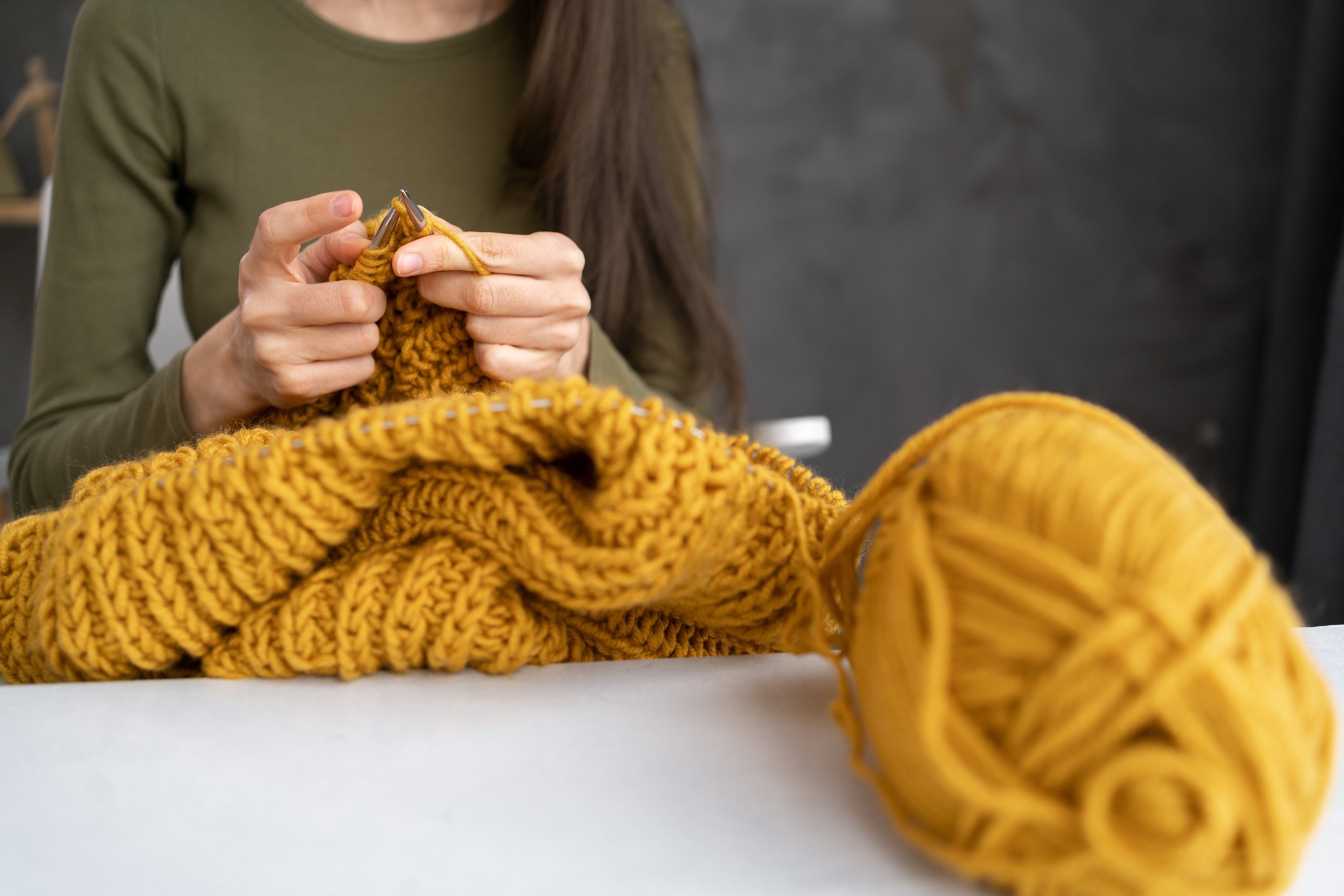"Knitting relaxes me. It's not just about taking a break from the stresses of daily life. I feel like I'm creating something of my own, and let's admit, it's far more exciting to wear a sweater that you've made rather than buying it. It's more sustainable," says Fátima Ramírez, who has swapped retail therapy at Zara for knitting workshops. Once or twice a month, she and her group of thirty-something friends meet up to put their needles together in a means of "escaping from the digital world" that dominates their lives. The outdated notion that knitting is reserved for grandmothers has been debunked. In fact, there are even 'yarn bombing' groups dedicated to crafting woolen creations as a form of vibrant street art, adorning streetlights, benches, and bollards in Madrid and cities worldwide.
"While it's true that the trend took longer to catch on here, it's all the rage overseas", explains Paula Carbonell, Retail & B2B Manager at We Are Knitters. The company, which started selling wool kits and patterns online, has experienced a boom in sales and has even opened its own store in the Spanish capital. "We organize workshops as part of our slow living philosophy. They're proving a popular alternative to traditional social activities," she adds.
Knitting as therapy
Celebrities like Cara Delevingne, Amanda Seyfried, and Ryan Gosling — who once admitted that his perfect day would be spent knitting — are avid needleworkers. However, art therapy involves more than just knitting. Over a decade ago, designer Ana Barriuso founded Amasarte, a pottery workshop in the Malasaña neighbourhood. Never before has she witnessed such a high level of interest in her classes. "It's evident that people are dedicating more time to themselves and their mental well-being, turning to arts and crafts for that purpose," she notes.
Lorena Godoy attended one of these classes last Saturday. "It was a birthday gift from my cousin," she explains, smiling broadly after firing a mug she had just made. "It's really satisfying to make plans with family or friends and leave with something useful, either for yourself or as a thoughtful gift," adds Barriuso, who studied Ceramic Arts — a passion she shares with none other than Brad Pitt and Leonardo DiCaprio.
Pottery, not just for women
"Why should I feel that pottery making is inherently feminine? I mean, if my house is full of plants, does that automatically make me feminine?" commented Bradley Cooper in an interview. While there's a gradual shift in the demographics of those engaging in these hobbies, women still dominate the scene, according to Barriuso. "Our primary demographic is women aged 25 to 35. It has certainly trended younger over time; initially, only elderly women attended our workshops."
Perhaps this age group "is less afraid or embarrassed to seek help," as with the decision to go therapy, suggests psychologist Tomás Navarro. According to his colleague, psychologist Víctor Amat, the surge in popularity of arts and crafts indicates that, fundamentally, we don't know how to be bored. "This return to ancestral art forms is an attempt, albeit absurd, to evade stress. It's a strategy to calm the body, allowing the brain to disconnect from hyperconnectivity by doing the exact opposite. But it doesn't work for everyone. While some patients find solace in knitting or ceramics, others require more dynamic activities, such as boxing. That's why it's not a one-size-fits-all recommendation."
For journalist and writer Andrea Mateos, who runs therapeutic writing sessions, the intention isn't to replace the work of a professional. However, she recognizes that crafting becomes a healing process when there's no self-censorship. "I always recommend letting yourself go with the flow. Many painful emotions surface, and many participants end up in tears," she explains.
The inspiration for these sessions came after collaborating with a non-profit organization supporting immigrant women. "Most of these women arrive in Spain feeling deeply uprooted, with some even being victims of abuse. Even if they don't fully understand the language or make spelling mistakes, being able to express their feelings can be incredibly liberating for them."
These spaces, however scarce, offer girls of all ages the chance to "find a support system that may be lacking even among their closest friends". Many feel overwhelmed by the challenges of life. "Here, they take control of their own destinies," explains Mateos.
Laura Massana, calligrapher, graphic designer and author of Moments to Write Beautifully (Planeta), emphasizes the importance of reclaiming our power of expression. Doing so allows us to evolve without falling into the trap of comparing ourselves with others and overcoming the typical 'I won't be able to' mindset that often hinders us. "I use calligraphy to touch the hearts of others in just one sentence. Many people see my designs and feel inspired to try their hand at calligraphy, unlocking their creative potential."
